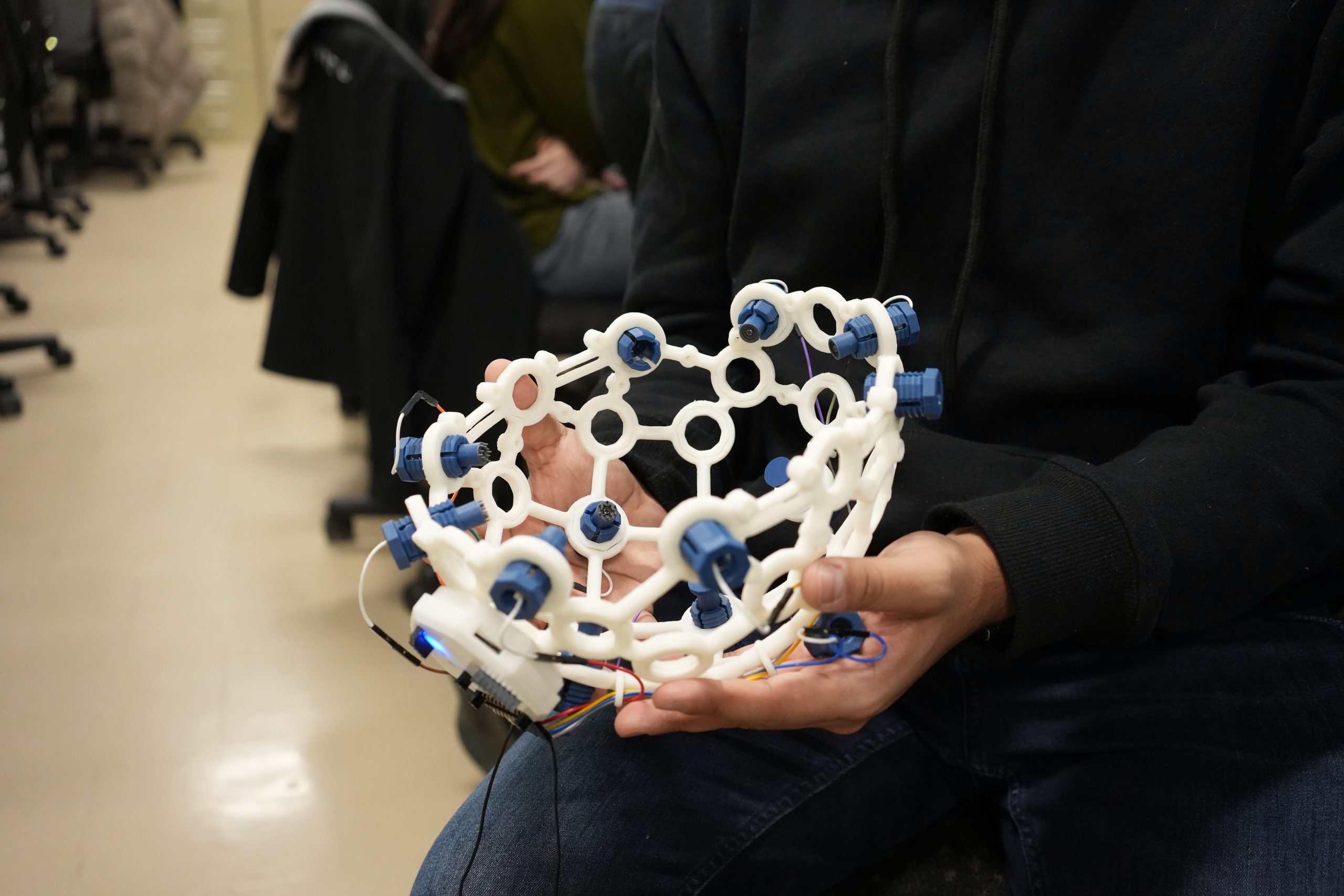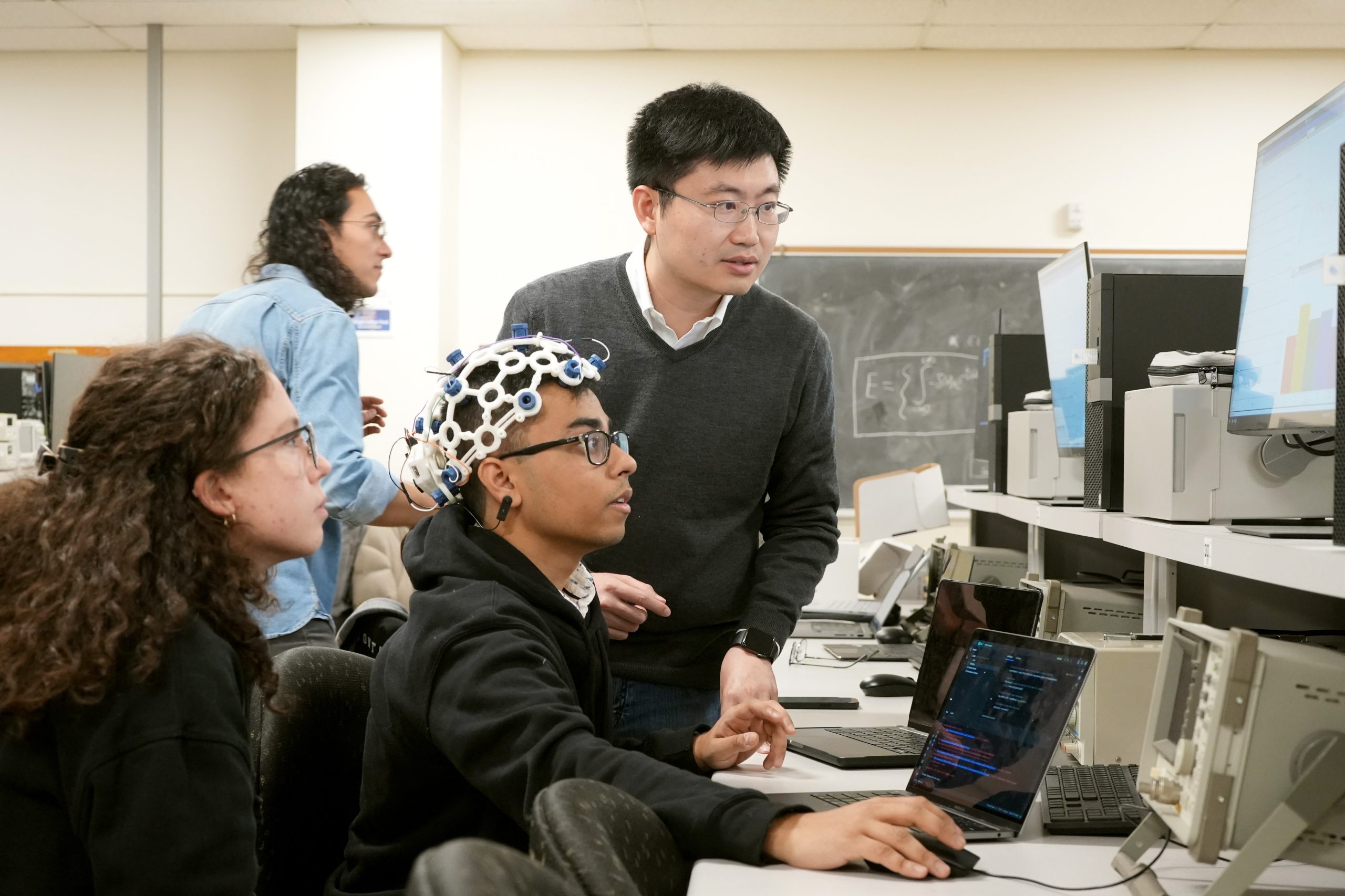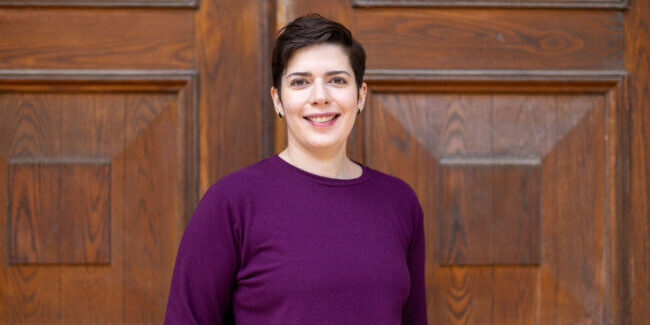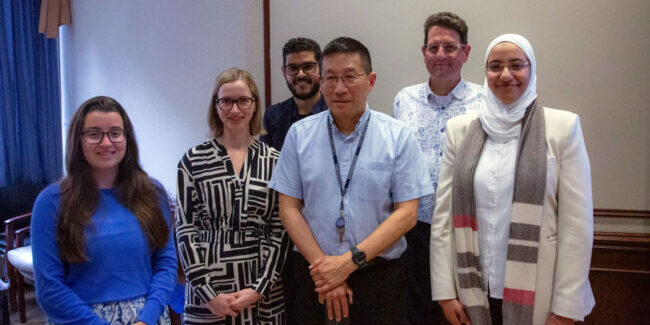Students in ECE’s newest undergrad course have to use their brains in more ways than one.
The course, called Interfacing and Modulating the Nervous System (ECE441), introduces fourth-year students to neuromodulation, a multidisciplinary area that draws on their core ECE knowledge of signal processing, control theory, electronics and machine learning. Neuromodulation devices deliver therapeutic stimulation to targeted areas of the brain and are used to treat a range of conditions, including chronic pain, neurological disorders such as Parkinson’s disease and epilepsy, depression, spinal cord injuries and hearing or vision loss, among others.
The course was developed through the combined efforts of ECE professors Xilin Liu and Ervin Sejdić, as well as the CRANIA Neuromodulation Institute. Support from the ECE department included the purchase of specialized equipment — biosensing headsets that allow students to acquire an electroencephalograph (EEG) — and technical support from Afshin Poraria, Director of Teaching Labs, and lab manager Iman Makhmal Koohi.
During one lab session, Jannis Gabler and Aurora Nowicki (both Year 4 ElecE) were amazed by what they could learn after they hooked up a team member.
“We were measuring electrical activity in his visual cortex,” says Gabler. “Just by extracting data from his signature, we could tell whether his eyes were closed or not.”
Liu says hands-on work is a crucial component of the course, which exposes students to neural interfacing techniques and applications at a time when many are considering graduate research or starting their career.
“Courses of a similar nature are offered at top universities like MIT and Stanford, primarily at graduate levels within their biomedical engineering departments. Introducing such a course at the ECE undergraduate level is quite a unique approach,” he says. “By leveraging the strengths of ECE labs, we implemented hands-on experiments enabling students to collect, analyze and modulate their own EEG signals in real-time.”

The course material is composed of Liu’s teachings on electronics and neural interfacing technology with Sejdić’s on signal processing, control theory and machine learning, along with several guest lecturers with various clinical expertise — including Professors Milos Popovic (BME) and Taufik Valiante (Surgery, BME), both early supporters of the course. During off-campus excursions to nearby hospitals and clinical settings, such as Toronto Western Hospital, the students hear from neurosurgeons and neuroscientists about real-world advancements in this field.
“The first lecture was one of the most interesting I’ve ever had at U of T,” says Nowicki.
“We learned early on how little we understand the brain. It’s incredibly complex,” adds Gabler.
An argument can be made that we’ll never have an accurate general model of the brain, says Liu. This means therapeutic determinations must be considered on patient-by-patient basis, which is a challenge for clinicians.
“You cannot keep people in the hospital for a long time just to monitor the progression of the disease,” Liu says. “And optimization done at the hospital might only be calibrated for the specific time of day, or might not work when they go back home, or while asleep.”
But wearable or implantable neural devices that use machine learning are ideally suited to address this challenge because they collect large amounts of data from patients over long periods of time. With this data, machine learning can learn the optimal timing and parameter configuration.
The field is growing so fast that the department looks forward to expanding its course offerings in neurotechnology, says Professor Deepa Kundur, Chair of ECE, who adds that this course helps build a strong foundation in the field.
“It’s an excellent example of how bringing awareness of cutting-edge applications into the classroom setting, through access to research labs and a diverse instructor team, allows students to see the incredible potential opportunities for their electrical and computer engineering skill set,” she says.
The department also has plans to make equipment available to students outside the class. The instructors are working with the student club NeuroTECH to organize some workshops and hands-on sessions.
Whether or not you see your future in health care, Nowicki recommends the course for the perspective it offers.
“You start to look at the brain differently, the mechanisms of its disorders, what clinicians and neuroengineers are doing to treat them. And so many people have friends or a family member who has experienced a disorder,” she says.




